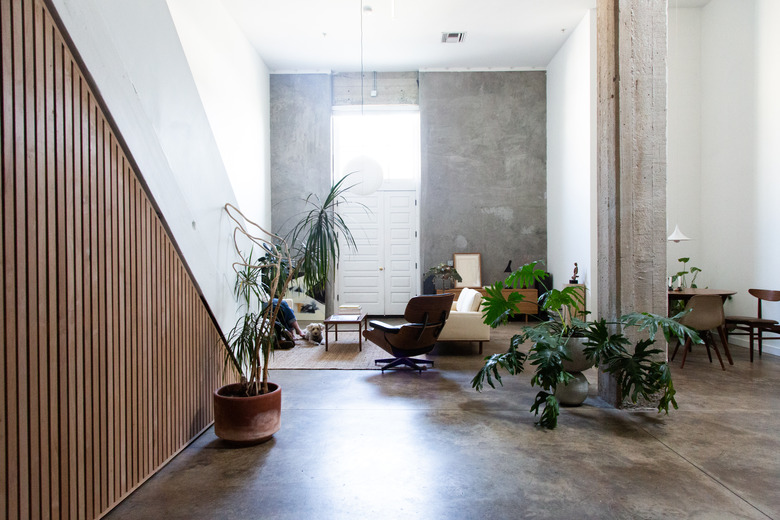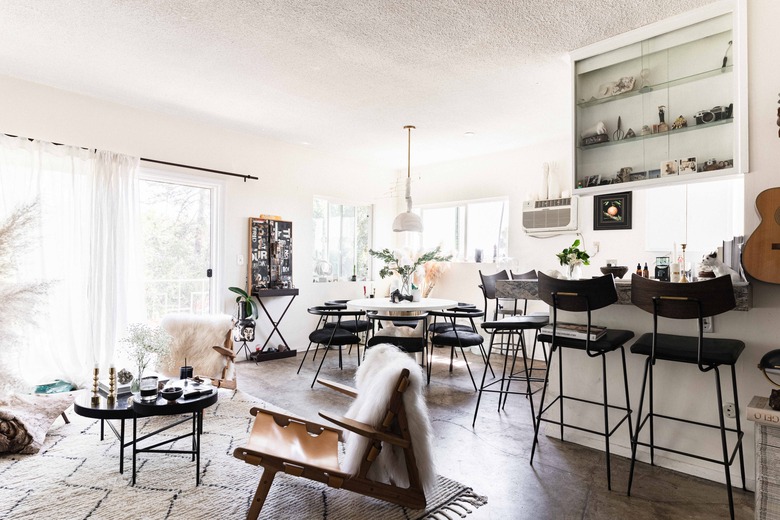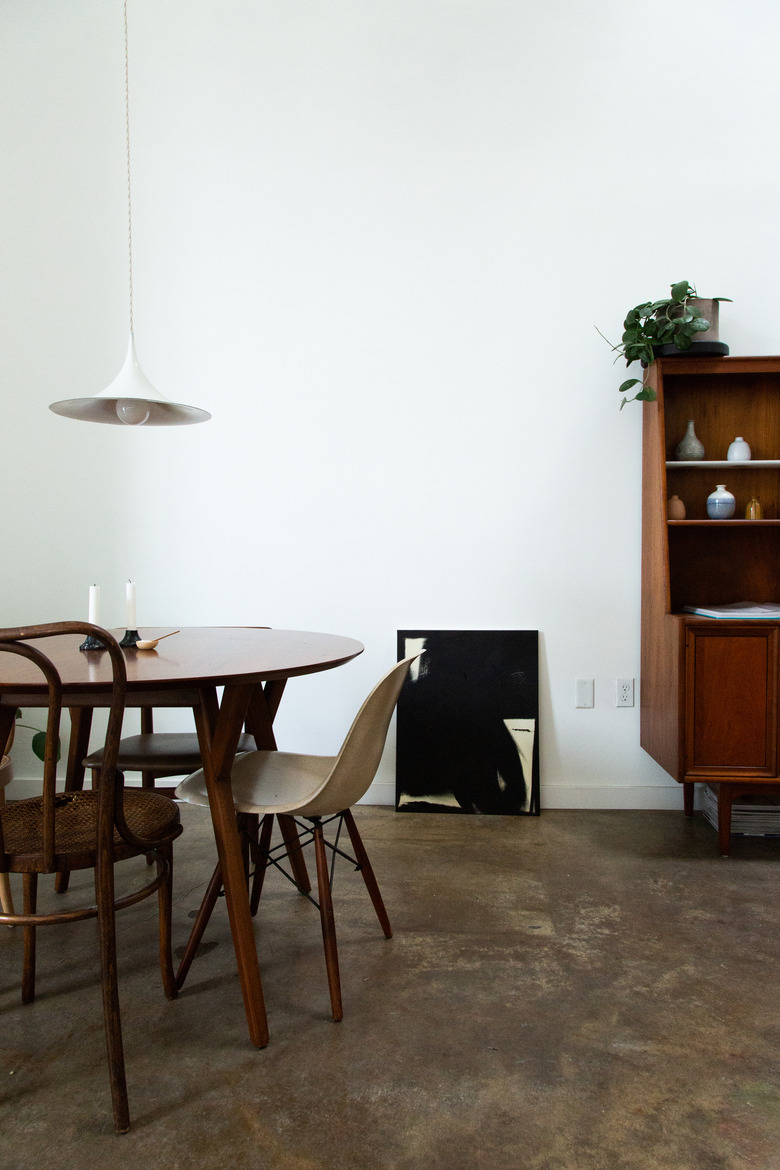DIY Concrete Floor Maintenance: What You Should Know
Concrete floors are a common sight in many homes, often found in areas like garages, basements, patios, and even kitchens and other living areas. Maintaining your concrete floors can be easy if you make sure to include cleaning it as part of a regular routine.
Upkeep like painting concrete surfaces, sealing your floors and staining your floors' surface can usually be DIY projects that can be completed in little time using basic tools and supplies. Sometimes, however, a maintenance project is best left to a more skilled hand, so it's always a smart move to know when to enlist the help of a concrete flooring pro.
Concrete Floor Maintenance
Concrete Floor Maintenance
While they are known for being durable, versatile and generally much easier to clean and maintain than many other flooring options, concrete floors still need to be shown some loving care if you want them to last for the long haul. Fortunately, cleaning concrete floors is incredibly easy.
Regular sweeping with a dust mop or microfiber cleaning pad will keep your floors free of dirt and debris, reducing the chances of buildup that could be hard to remove later. If your floors are sealed or polished, choose a pH-neutral cleanser (acidic cleaners can give your floor an ugly hue) to mix with water. Mop it clean, rinse and allow it to dry. For bare concrete floors, acidic is okay — in fact, an acid-based cleanser can help tackle efflorescence, which is the white, salty residue that sometimes builds up on the surface.
Concrete floor maintenance also includes coating it with something protective, like a concrete sealer. Often, a sealer is applied to concrete over a couple of layers of paint or stain. Sealer can add to the longevity of your concrete surface by locking out moisture, protecting it from UV rays and preventing spills like oil from staining it. Some people may opt to lay rubber floor tiles or mats over their sealed concrete surface, which can offer an additional layer of protection against stains.
How to Paint Concrete Floors
How to Paint Concrete Floors
Adding a coat of paint to your concrete floors can add a bit of color and warmth to your space, be that a basement, garage or patio area. Painting is an easy DIY project for just about anyone and only requires a few tools, a little preparation and a bit of time. As a rule, be sure to allow ample drying time between each of these steps to ensure a longer-lasting paint job.
- Use a chisel scraper to remove any built-on grime and then sweep the entire area clean of any dirt and debris.
- Wet your floor using a hose if the space is outdoors or a sprayer if it's inside.
- While the floor is still damp, apply a degreasing product to the surface of your floor using a push broom and then rinse it clean.
- Prepare the floor by filling in any cracks with a masonry crack-filling product.
- Cover the floor with a paint primer in 2-foot-wide sections at a time.
- Use a paint roller to apply epoxy paint to your floor's surface. Epoxy paint is much more durable than latex and should last about three years.
- Add sealer as directed below.
How to Stain Concrete Floors
How to Stain Concrete Floors
Rather than painting concrete floors, many people opt for staining concrete, which can add richness and depth to many surfaces, either indoors or outdoors. There are two types of stain to use on concrete: acid stains and water-based stains or dyes. Acid stains are translucent and colorize the concrete through a chemical reaction, while water-based stains and dyes simply add color.
- Prepare your area by thoroughly brushing and washing away any dirt and debris, taking care to wet the surface of the concrete you want to stain.
- If you're using a water-based stain or dye and are covering an area that was previously treated with an acid stain, you will need to apply a neutralizer to the surface and allow it to dry before you apply your new stain.
- Protect any areas adjacent to the floors from stain splatter by covering them with some tape and a plastic barrier.
- Use a sprayer to wet down the concrete using nonstop, circular motions.
- Add a coat of stain to your surface using the same circular motions and take care to work in small sections (about 4 feet by 6 feet) at a time. To achieve a darker or deeper hue, allow the first coat to dry for a few hours and then repeat. Two coats should be sufficient for most surfaces. Rinse away any stain residue and let everything dry for about 24 hours.
- To prepare surfaces that have been treated with acid-based stains, you'll need to neutralize it with ammonia or baking soda, which will allow your sealer to bond to the surface. Neutralizer can be sprayed on or mopped on and should be rinsed off. Water-based stains do not require neutralizing.
- Apply a sealer.
How to Seal Concrete Floors
How to Seal Concrete Floors
Whether you have painted or stained your concrete floors or you're just looking to protect the surface from environmental damage, you should apply a sealant. Sealing your floors will not only prevent cracks in your flooring's surface but will also protect it from water damage, which will increase the longevity of your floor. To begin, make sure you purchase a sealant designed to work with the paint or stain that's on the surface of the concrete. Then, apply two coats of sealer, allowing the first one to dry completely, and be sure to use perpendicular strokes for each coat to ensure full coverage.
Calling a Pro for Your Concrete Floors
Calling a Pro for Your Concrete Floors
When it comes to maintaining the exterior of your concrete floor, most jobs can be done with a DIY approach. Installing concrete, on the other hand, is most likely a job better left for the pros for a number of reasons. The trouble with many DIY installations is that even a minor mistake can be incredibly difficult if not impossible to repair, which can end up costing you a lot of money in the long run.
If you think you might want to cover your concrete flooring with a different type of material later on, like tile, your concrete will need to be stable and meet several requirements to best support new flooring, according to Old House Journal. Suitable concrete slabs should be well-cured and dimensionally stable and level as well as free of built-on grime, grease and cracks.
So, how do you know when it's time to enlist the help of a concrete flooring professional? If you're unsure of the building requirements in your area and aren't willing or able to learn what they entail, then hiring a contractor will make installing new interior slabs or overlaying existing slabs as easy on you as it gets.
Additionally, if you have concrete flooring that is heavily damaged and requires breakup and removal, a concrete cutter will be able to do so effectively and efficiently using specialty diamond-backed blades, and a pump operator will be able to operate the equipment needed to pour new concrete. Finally, if you're looking to add detail to your concrete structure, like texture stamping, a professional will definitely be your best bet for getting the job done right.
References
- Family Handyman: Renew Your Concrete Patio: How to Stain Concrete
- Concrete Network: How to Care for Concrete Floors
- HomeAdvisor: How to Choose a Concrete Contractor
- Concrete Decor: Cleaners 101 – Techniques for Cleaning Concrete
- Concrete Camouflage: How to Neutralize Concrete Acid Stain
- Old House Journal: Underneath What's Underfoot



